
|
GCOOS is the Gulf of Mexico regional component of the U.S. Integrated Ocean Observing System (IOOS). Our mission is to provide timely, reliable and accurate information on the open and coastal ocean waters of the Gulf of Mexico to ensure a healthy, clean, productive ocean and resilient coastal zone.
|
|
|
|
August 2016 - In This Issue:
|
|
|
|
|
Greetings!
I hope many of you had a chance to read the recent commentary we authored for the Marine Technology Society Journal calling for the dedication of some DWH monies to observation tools and activities. To further raise awareness of the issue, we also offered a shorter version of that commentary to newspapers on the Gulf Coast. I'm pleased to note that the commentary was picked up by several, including the Tallahassee (Fla.) Democrat, the Sun Herald in Gulfport, Miss., the Montgomery, Ala., Advertiser, and the Sarasota, Fla., Herald Tribune.
We've also been working on our new Strategic Plan, which will guide our priorities for the next five years, and have been gathering information for our IOOS certification. We expect to submit our certification documents in September.
Don't forget that our next Board Meeting takes place 8:30 a.m. to 5:30 p.m. (CST) Sept. 22 in Houston. GCOOS Members can contact GCOOS Research Associate Susan Martin for information if you wish to attend the meeting.

|
|
|
|
|
GCOOS Receives New Grants
|
|
The Texas OneGulf Center of Excellence has announced more than $2 million in research projects to address priority problems affecting the health and well-being of the Gulf of Mexico and those who depend on it. GCOOS staff received $103,650 to support the "Red Tide Data Integration Project."
When harmful algal blooms like red tide algae grow and disintegrate along the Texas coast, the blooms' neurotoxins may become airborne causing adverse effects that can significantly increase emergency room traffic and visits to doctors. The Texas HAB Data Integration Project will team up Texas researchers with expertise in HABs and medical researchers familiar with data about the effects of HABs on humans to work together to better prepare first responders, emergency rooms and the medical system to respond to red tide events and help minimize human health impacts.
 GCOOS staff will also collaborate with Texas A&M University at Galveston on a $60,000 project "Species Identification Training for Effective Monitoring and Management of Harmful Algal Blooms." GCOOS staff will also collaborate with Texas A&M University at Galveston on a $60,000 project "Species Identification Training for Effective Monitoring and Management of Harmful Algal Blooms."
|
|
|
Effective monitoring and management of harmful algal blooms can impact ecosystems and human and animal health and relies on accurate and timely identification of the species involved. However, many trained in this specialty are either retired or retiring. This program will provide critical comprehensive training in identification and taxonomy for scientists, technicians and managers.
Texas OneGulf is led by the Harte Research Institute for Gulf of Mexico Studies at Texas A&M University-Corpus Christi. These projects, funded by the Office of the Governor, represent the first major allocation of research dollars from the Texas OneGulf consortium, which was created after the Deepwater Horizon oil spill to direct funding in support of programs, projects and activities that restore and protect the environment and economy of the Gulf Coast region. The projects tackle a variety of issues that directly impact the Gulf of Mexico and its residents, from studying the impact of red tide blooms on human health and the health care infrastructure to using underwater gliders to search the coast for hypoxic (dead) zones.
|

GCOOS Data Expertise
|
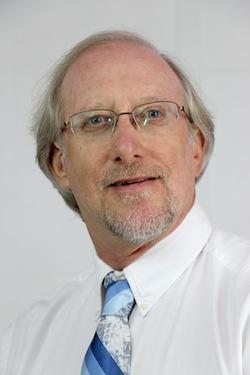 After nearly a year of planning and writing, the National Academies of Sciences -- Engineering and Medicine released the report "Effective Monitoring to Evaluate Ecological Restoration in the Gulf of Mexico." The report is expected to guide Restoration activities resulting from the Deepwater Horizon event and it includes a chapter on Data Stewardship by Principal Author Dr. Matthew Howard, DMAC Coordinator at GCOOS. After nearly a year of planning and writing, the National Academies of Sciences -- Engineering and Medicine released the report "Effective Monitoring to Evaluate Ecological Restoration in the Gulf of Mexico." The report is expected to guide Restoration activities resulting from the Deepwater Horizon event and it includes a chapter on Data Stewardship by Principal Author Dr. Matthew Howard, DMAC Coordinator at GCOOS.
|
GCOOS recently participated in the Gulf of Mexico Regional Collaboration Team's Data Synthesis Workshop in Baton Rouge Aug. 1-2. The workshop, hosted by NOAA's  National Centers for Environmental Information and the Southern Regional Climate Center at Louisiana State University, focused on data collection and archive needs as volumes of projects funded through the Deepwater Horizon settlement come online. National Centers for Environmental Information and the Southern Regional Climate Center at Louisiana State University, focused on data collection and archive needs as volumes of projects funded through the Deepwater Horizon settlement come online.
The meeting also included representatives from the National Marine Fisheries Service, the National Ocean Service, the National Weather Service and other federal program offices. GCOOS is a member of the regional team, which is a collaborative effort of NOAA employees and partners focused on identifying, communicating and responding to regional needs in a collaborative environment.
|
 Ocean Observing Tools Support Investigation of Mysterious Die Off in Flower Garden Banks Sanctuary Ocean Observing Tools Support Investigation of Mysterious Die Off in Flower Garden Banks Sanctuary
|
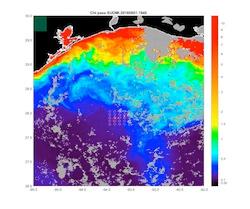 Learn how ocean observing tools are providing some insights on the mysterious die-off of invertebrates in the East Flower Garden Bank (EFGB), one of two coral reefs within the Flower Garden Banks National Marine Sanctuary, about 100 miles off the Texas coast. Learn how ocean observing tools are providing some insights on the mysterious die-off of invertebrates in the East Flower Garden Bank (EFGB), one of two coral reefs within the Flower Garden Banks National Marine Sanctuary, about 100 miles off the Texas coast.
Satellite images developed by the Institute for Marine Remote Sensing (IMaRS) at the University of South Florida, a GCOOS Member and data provider, identified a highly unusual offshore movement of coastal water that affected the Sanctuary throughout much of July.
|
 GCOOS Member Tracks Historic Louisiana Rainfall GCOOS Member Tracks Historic Louisiana Rainfall
|
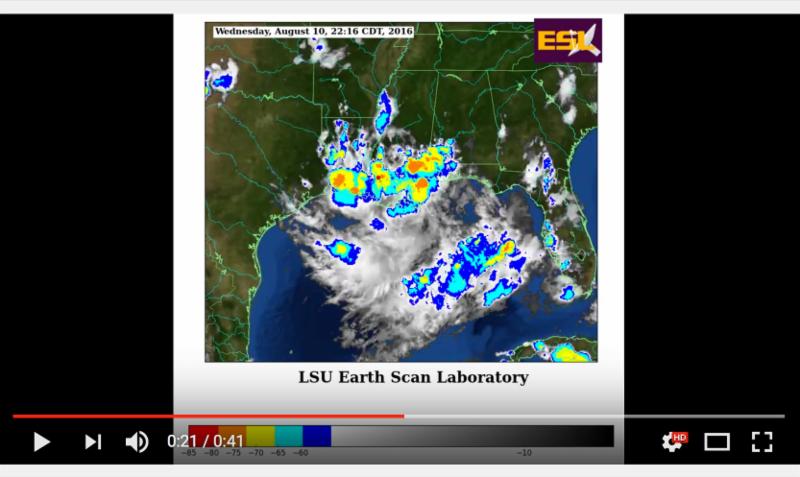
Record rains have caused some of the most extensive flooding ever seen in Baton Rouge, La., and surrounding areas that has led to the deaths of seven people and the flooding of an estimated 40,000 to 50,000 homes -- including the governor's mansion.
Alaric S. Haag, Systems Administrator for GCOOS member
Earth Scan Laboratory (ESL) at Louisiana State University, created a c
loud-top temperature animation using thermal infrared imagery every 15 minutes from the NOAA GOES-East weather satellite.
|
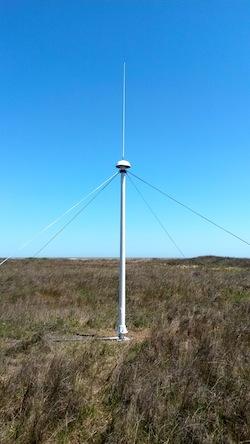 Texas A&M University's College of Geosciences has successfully launched two new High Frequency Radars (HFR) as the first phase of the collaborative "Smart Gulf" initiative that will provide instant oceanic and atmospheric conditions in the Gulf of Mexico. These data will positively impact the lives of thousands of commercial fishermen, oil and gas workers, shipping and recreational boaters, coastal residents and others who are in and around the Gulf at any moment of the day. Texas A&M University's College of Geosciences has successfully launched two new High Frequency Radars (HFR) as the first phase of the collaborative "Smart Gulf" initiative that will provide instant oceanic and atmospheric conditions in the Gulf of Mexico. These data will positively impact the lives of thousands of commercial fishermen, oil and gas workers, shipping and recreational boaters, coastal residents and others who are in and around the Gulf at any moment of the day.
Expanding the HFR network in the Gulf has been a priority issue for GCOOS. "GCOOS has been promoting the need for a stronger HFR network in the Gulf of Mexico and we applaud the commitment that Dr. Anthony Knap and Texas A&M University have made by installing these radar systems that will enhance boater and maritime operator safety on our waters. We are one step closer to having tools to better forecast and mitigate natural and human disasters. This is a critically important in building a complete observing system for the Gulf of Mexico," said GCOOS Executive Director Dr. Barbara Kirkpatrick.
|
Coastal Resilience Survey
|
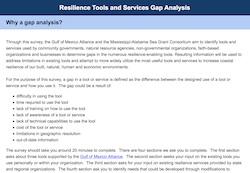 The Gulf of Mexico Alliance, which recently received a Regional Coastal Resilience Grant from NOAA, is looking for community input to complete a gap analysis on the use of resilience tools and services by various audiences in the Gulf of Mexico. The Gulf of Mexico Alliance, which recently received a Regional Coastal Resilience Grant from NOAA, is looking for community input to complete a gap analysis on the use of resilience tools and services by various audiences in the Gulf of Mexico.
The goal is to identify gaps, then support proactive projects that will allow 10 coastal communities to enhance their resilience by supporting actions such as risk-communication improvement, updates of tools that communities identify as vital to decision making and development of coastal resilience roadmaps that will guide communities as they prepare for hazards.
|
|
FEMA Climate Change Report
|
 With the record rainfall and flooding in Louisiana, With the record rainfall and flooding in Louisiana,
perhaps the recent release of a new FEMA report looking at the potential long-term impacts of climate change on the National Flood Insurance Program is especially timely.
The climate change impact assessment conducted by AECOM includes all 50 states and U.S. territories with major attention given to areas of the greatest population and the largest inventory of at-risk properties. FEMA intends to use the findings to assist in the development of recommendations addressing the impacts of climate change and future development on Flood Insurance Rate Maps (FIRMs).
|
The Marine Technology Society has appointed Kevin Traver as its 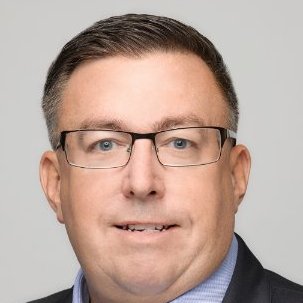 new Executive Director. In this position, Traver will lead the organization in its mission to promote awareness, understanding, advancement and application of marine technology. new Executive Director. In this position, Traver will lead the organization in its mission to promote awareness, understanding, advancement and application of marine technology.
Traver joins MTS from the Navy League of the United States, where as Vice President for Corporate Affairs he grew successful programs, partnerships and campaigns by developing strong relationships with key decision makers in the business community as well as the Navy, Coast Guard, Marine Corps, Maritime Administration and Merchant Marines.
|
Call for Abstracts: 2017 Gulf of Mexico Oil Spill & Ecosystem Conference
|
 The 2017 Gulf of Mexico Oil Spill and Ecosystem Science Conference has opened its call for abstracts. The theme, "Ecosystem Approaches to Gulf Response and Restoration," encourages researchers to consider the application of their results to practical use. The 2017 Gulf of Mexico Oil Spill and Ecosystem Science Conference has opened its call for abstracts. The theme, "Ecosystem Approaches to Gulf Response and Restoration," encourages researchers to consider the application of their results to practical use.
Scientific research will be critical to informing planning, preparedness, response and recovery for future events and connecting this to decision makers in the response and restoration communities will be key. Looking across a broad range of disciplines, what have we learned about oil spills and their impacts that can reduce uncertainty, mitigate ecological, social and health impacts of a future spill, advance response strategies and improve how we approach restoration?
The 23 selected conference sessions emphasize applications of recent oil spill science to restoration, resource management and oil spill response. Each session will include invited speakers and oral presentations; papers not selected for oral presentations will be afforded an opportunity to participate in the poster session.
|
 The Dispatches From The Gulf video series now has a guide containing descriptions and links to each of 50 short films cross-referenced to corresponding Gulf of Mexico Research Initiative themes and consortia. The Dispatches From The Gulf video series now has a guide containing descriptions and links to each of 50 short films cross-referenced to corresponding Gulf of Mexico Research Initiative themes and consortia.
The series includes a one-hour documentary (narrated by Matt Damon), a series of short videos, podcasts and additional educational resources related to oceanographic scientists, researchers and institutions.
|
Study Details Underwater Oil Plume Formation and Droplet Size Distribution
|
 |
|
 |
Researchers conducted a large-scale underwater experiment that released oil through 25.4 mm (one-inch) horizontal pipe. High-resolution cameras captured the detailed turbulent structures, characteristics of primary breakup, and oil droplet separation from the upper plume in the discharged oil jet. (Photo by Franklin Shaffer; Modified by Lin Zhao.)
|
A new study published in the Chemical Engineering Journal "Underwater oil jet: Hydrodynamics and droplet size distribution" simulated an underwater blowout to analyze the formation, path and duration of oil plumes.
Study author Michel Boufadel explained why determining oil droplet size distribution is a major goal for oil spills and blowouts: "The size of an oil droplet plays a major role in where it goes, as the larger the oil droplet, the greater its buoyancy. Larger oil droplets rise rapidly to the surface, while smaller oil droplets -- those half a millimeter or less -- tend to be carried horizontally through the water and could linger for months in the water column."
The study noted that the simulated blowout formed two plumes, one due to momentum and plume buoyancy and another due to the buoyancy of individual oil droplets separating from the first plume. It also found that oil plumes form through a two-step process: first, relatively large ligaments of connected oil develop a few inches from the release point in a process called the "primary breakup" and are then entrained back into the plume for their "secondary breakup" into droplets.
|
Gulf Oil Spill Expedition
|
Researchers from the University of South Florida College of Marine Science, along with colleagues representing institutions across the country and internationally, have 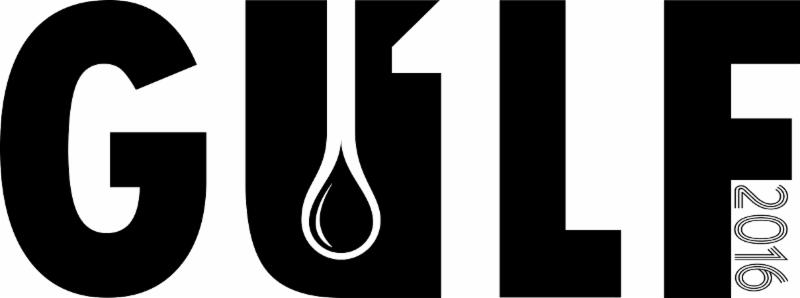 embarked on a 40-day research cruise through the Gulf of Mexico to gather key data that will provide a more complete understanding of the destructive effects from two significant oil spills. embarked on a 40-day research cruise through the Gulf of Mexico to gather key data that will provide a more complete understanding of the destructive effects from two significant oil spills.
The USF-led research group will study the seas, coastlines and reefs impacted by the 2010 Deepwater Horizon and 1979 Ixtoc oil spills, the two largest submarine blowouts in history. The team of 13 researchers boarded the R/V Weatherbird II on Tuesday, Aug. 2 for the group's longest trip to date in a six-year plan to study the incidents.
|
Mississippi Restoration Update
|
 As restoration activities progress in Mississippi, officials at the Mississippi Department of Environmental Quality (MDEQ) have updated their website to be more user-friendly and provide more information about restoration in that state. As restoration activities progress in Mississippi, officials at the Mississippi Department of Environmental Quality (MDEQ) have updated their website to be more user-friendly and provide more information about restoration in that state.
The site also hosts a new Transparency Database that aligns with Mississippi's commitment to transparency. Online at
www.restore.ms
.
MDEQ has also published its first issue of the Mississippi Restoration Review, a restoration newsletter that highlights restoration projects across the Mississippi Gulf Coast. The department is also sponsoring its inaugural restoration summit in November.
|
Restoration Funding Calendar
- NOAA RESTORE Act Science Program hosts a three-year calendar that consolidates planned funding opportunities
By State:
|
| U.S. IOOS Director Search Open |
| Zdenka Willis, the Director of the U.S. Integrated Ocean Observing System (IOOS) Program Office will be retiring in January 2017 after more that a decade directing and guiding the U.S. IOOS Program. NOAA has opened a national search for a Director. The full position announcement can be found at USA Jobs. The application deadline is September 4, 2016.
|
| Water Resources Department, Lake County, CA |
|
Lake County is recruiting for a Water Resources Director with a science background (e.g., limnology) who will take a science-based, comprehensive approach to the management of Clear Lake, a large natural lake in Northern California that is increasingly impacted by cyanobacteria blooms. Closing deadline is August 31, 2016.
|
| CARICOOS Postdoctoral Researcher |
CARICOOS is seeking an outstanding postdoctoral candidate to help lead ocean observing and
oceanographic modeling efforts for the US-Caribbean waters. The successful candidate must hold a
PhD in oceanography, ocean or coastal engineering or related disciplines with emphasis on ocean
observing technology, field observations and numerical modeling of oceanographic processes. The
ideal candidate will be fully bilingual (English / Spanish). Interested candidates can apply by sending a CV and the name and contact information of three references to CARICOOS Technical Director Miguel Canals ([email protected]) and Deputy Director Sylvia Rodríguez ([email protected]). The position will remain open until fulfilled.
|
|
Texas Sea Grant Undergraduate Research Scholars Program Applications
|
Undergraduate Research Scholars
engage in a two-semester (fall/spring) research project conducted under the supervision of a Texas A&M University faculty mentor that culminates in a public presentation and written thesis. This program seeks to involve any
eligible
undergraduate in the "graduate student" experience and introduce them to the academic publication process and scholarly community. Additionally, this program plays an important role in ensuring the unified format of undergraduate theses published at Texas A&M University.
|
The Gulf of Mexico Alliance offers a summary of funding announcements online.
|
PCMHAB Funding Opportunity & ECOHAB Opportunity
|
|
Prevention, Control and Mitigation of HABs (PCMHAB) requests proposals for developing, demonstrating, and transferring to end users new methods for monitoring HAB toxins in shellfish and other animals consumed by humans to protect public health.
Proposals will be required to address research priorities developed by the Interstate Shellfish Sanitation Commission (ISSC). Depending on the maturity of the method, Phase 1 proposals must demonstrate familiarity with the process of ISSC review of a method and adoption into the NSSP for regulatory use, Phase 2 projects must provide a detailed plan for obtaining ISSC adoption and Phase 3 projects must implement the plan.
Approximately three to six projects two to three years long are expected to be funded up to $100,000 per year per proposal. A total of up to approximately $300,000 may be available in Fiscal Year 2017 for the first year for all PCMHAB projects.
- Deadline: A short letter of intent is required and due by 5 p.m. Sept. 2, 2016. Proposals are due by 5 p.m. Nov. 2, 2016.
The Ecology and Oceanography of HABs (ECOHAB) requests proposals that address:
- Quantitative understanding of HABs and, where applicable their toxins, in relation to the surrounding environment the intent of developing new information and tools, predictive models and forecasts and prevention strategies to aid managers in coastal environments;
- Understanding leading to models of trophic transfer of toxins, knowledge of biosynthesis and metabolism of toxins and assessment of impacts of toxins on higher trophic levels. The program has a number of specific priorities.
Four to five targeted projects of two to four years are expected to be funded up to $250,000 per year per proposal or $750,000 per proposal. It is anticipated that up to approximately $1 million might be available in Fiscal Year 2017 for the first year for all ECOHAB projects.
|
|
NOAA has announced approximately $10 million available to support fisheries projects through the 2017 Saltonstall-Kennedy (SK) Grant competition. The agency is seeking applications in seven priority areas: marine aquaculture; fishery data collection; techniques for reducing bycatch and other adverse impacts; adapting to climate change and other long-term ecosystem change; promotion, development, and marketing; socio-economic research and territorial science. Pre-proposals are required.
- Pre-proposals for 2017 are due Sept. 20, 2016.
- Deadline: The solicitation for proposals closes Dec. 9, 2016.
- Details
|
September
October
The Marine Technology Society is planning a joint Navy-Industry-University "Underwater Cables, Connectors and Imaging Systems" three-day working session. This workshop will take place Oct. 26-28, 2016 in Ft. Lauderdale, Fla., and is organized by the MTS Cables and Connectors Committee and the MTS Underwater Imaging Committee. Abstracts for brief targeted presentations (no written papers) germane to the subject matter will be considered until Sept. 15.
More info
 The Mississippi Department of Environmental Quality will be hosting its inaugural Restoration Summit on Nov. 15, 2016. The Summit will feature information and presentations on current projects as well as community engagement opportunities to gather input on Deepwater Horizon restoration efforts in Mississippi.
Registration is open for the 2016 Mississippi-Alabama Bays and Bayous Symposium Nov. 30-Dec. 1 in Biloxi, Miss., at the Mississippi Coast Coliseum and Convention Center. The theme for the two-day symposium is "From Thoughts to Actions - Restoration on the Gulf Coast."
More info
December
Rising Seas Summit, New Orleans, sponsored by the Association of Climate Change Officers (ACCO), December 13-15. The summit brings together thought leaders, community and urban planners, engineers and policy experts to discuss different methods for adapting to sea level rise.
2017
January
The American Meteorological Society will host its
97th Annual Meeting with the theme "Observations Lead the Way." Meeting in Seattle Jan. 22-26, 2017.
Details
February
Other Gulf-Related Events
Have a meeting announcement? Please email details to Laura Caldwell at GCOOS.
|
|
|
|
|